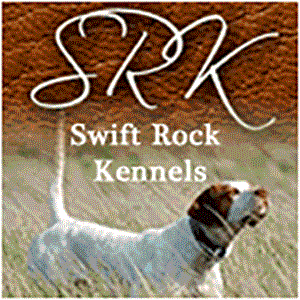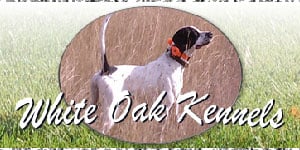A Day In The Mash
Posted 06/23/2024
“Find em!” The rally cry was given to the eager pack of beagles. They excitedly hit the cover, noses to the ground, their tails wagging furiously . My son Steve and I had met his Uncle Gary Sanderson for a rabbit hunt. Having been with Gary once before at Thanksgiving and hearing his dogs in action, I knew we were in for a real treat.
We met up at Faro, an old family farm house which serves as our hunting camp. The decision was made to hunt near our pond on a farm we haven’t tried before. There is lespedeza planted on the pond banks, fields on one side and a big hardwood bottom joining it with plenty of briar beds on the edge. The action came fast, the trail dog opening up as soon as she entered the lespedeza patch and the rest of the pack joined her in the search. They soon jumped this rabbit and all seven dogs gave chase, making music to a hunter’s ears.
Steve has been rabbit hunting with Gary for a while now and seems to have learned the basic tactics required for success. He took up a strategic position with his 12 gauge close to where the dogs had first jumped and waited for the quarry to return. He was soon rewarded with a shot at a big “mash” rabbit. These rabbits are easily distinguished from their cottontail cousin by their brown tail markings and shorter ears.
The term “mash” for marsh seems to be common throughout Eastern North Carolina and describes the habitat these rabbits prefer. The low grounds on our family farms have been referred to as “the mash” for as long as I can recall. As a boy I remember burning off those reed heads and briars in the mash and the great benefit this was for small game habitat. Somehow the practice of burning fell out of favor in our area, a shame since fire is such a useful tool in promoting wildlife habitat.
Marsh rabbits do love the water and I watched one jump in and swim a short ways in an effort to elude the dogs. Often they use the swampy areas to their advantage and make an escape this way. They have even been known to lie in water with just their nose sticking out until danger passes.
Gary says he made the shift from pointers to beagles several years ago. “There’s just not enough birds anymore to make it worthwhile. The beagles are easy to keep up and I find plenty of rabbits.” His pack is a tight working group of 12” beagles that are very evenly matched in speed.
While some folks use an enclosed rabbit pen to start their puppies, Gary does all his training in the wild. He does keep training collars on his puppies just in case the temptation of a deer proves to be too great. His older dogs are broke and seem to respond eagerly to their master’s commands. On this day one of Gary’s new dogs secured her place in the pack by performing nicely for us.
It seems to me that a rabbit hunt is the perfect way to introduce a youngster to the outdoors. They can move around, talk all they want and explore nature while tagging along for the hunt. Most hunts furnish enough action to keep a kids interest up. Another real plus is that while it is sometimes tough to secure deer hunting permission, most landowners are more lenient in allowing one to try their luck for rabbits. And after deer season is over you can have a lot of territory to pick from.
Scenting conditions were good that day and the beagles soon had another rabbit going. The action was steady for the rest of the afternoon with little break between chases. Rabbits do like their thickets, but on this hunt we were able to get access to the dogs without going very deep into the cover. All of us got a chance to add to the game bag, but I think Steve came out ahead in the final tally. By days end we had enough rabbits for a nice dinner, mostly the mash rabbits, with one cottontail in the mix. My preference is fried, though I recently tried some barbequed on the grill and that was tasty as well.
It was an enjoyable day afield and good to know we still have ample opportunities for small game in Wayne County. We even flushed a covey of quail, which has become a rarity in this part of the state. The birds were right there at the same spot where I remember finding them some 40 years ago.
As the sun started to sink low the dogs were still going strong and we had to coax them back to the truck. They did a wonderful job and I look forward to getting out with them again soon.
Now I wonder, maybe if we planted some more food plots and do a little burning, that covey of birds just might stick around a few more years. I sure hope so.
We met up at Faro, an old family farm house which serves as our hunting camp. The decision was made to hunt near our pond on a farm we haven’t tried before. There is lespedeza planted on the pond banks, fields on one side and a big hardwood bottom joining it with plenty of briar beds on the edge. The action came fast, the trail dog opening up as soon as she entered the lespedeza patch and the rest of the pack joined her in the search. They soon jumped this rabbit and all seven dogs gave chase, making music to a hunter’s ears.
Steve has been rabbit hunting with Gary for a while now and seems to have learned the basic tactics required for success. He took up a strategic position with his 12 gauge close to where the dogs had first jumped and waited for the quarry to return. He was soon rewarded with a shot at a big “mash” rabbit. These rabbits are easily distinguished from their cottontail cousin by their brown tail markings and shorter ears.
The term “mash” for marsh seems to be common throughout Eastern North Carolina and describes the habitat these rabbits prefer. The low grounds on our family farms have been referred to as “the mash” for as long as I can recall. As a boy I remember burning off those reed heads and briars in the mash and the great benefit this was for small game habitat. Somehow the practice of burning fell out of favor in our area, a shame since fire is such a useful tool in promoting wildlife habitat.
Marsh rabbits do love the water and I watched one jump in and swim a short ways in an effort to elude the dogs. Often they use the swampy areas to their advantage and make an escape this way. They have even been known to lie in water with just their nose sticking out until danger passes.
Gary says he made the shift from pointers to beagles several years ago. “There’s just not enough birds anymore to make it worthwhile. The beagles are easy to keep up and I find plenty of rabbits.” His pack is a tight working group of 12” beagles that are very evenly matched in speed.
While some folks use an enclosed rabbit pen to start their puppies, Gary does all his training in the wild. He does keep training collars on his puppies just in case the temptation of a deer proves to be too great. His older dogs are broke and seem to respond eagerly to their master’s commands. On this day one of Gary’s new dogs secured her place in the pack by performing nicely for us.
It seems to me that a rabbit hunt is the perfect way to introduce a youngster to the outdoors. They can move around, talk all they want and explore nature while tagging along for the hunt. Most hunts furnish enough action to keep a kids interest up. Another real plus is that while it is sometimes tough to secure deer hunting permission, most landowners are more lenient in allowing one to try their luck for rabbits. And after deer season is over you can have a lot of territory to pick from.
Scenting conditions were good that day and the beagles soon had another rabbit going. The action was steady for the rest of the afternoon with little break between chases. Rabbits do like their thickets, but on this hunt we were able to get access to the dogs without going very deep into the cover. All of us got a chance to add to the game bag, but I think Steve came out ahead in the final tally. By days end we had enough rabbits for a nice dinner, mostly the mash rabbits, with one cottontail in the mix. My preference is fried, though I recently tried some barbequed on the grill and that was tasty as well.
It was an enjoyable day afield and good to know we still have ample opportunities for small game in Wayne County. We even flushed a covey of quail, which has become a rarity in this part of the state. The birds were right there at the same spot where I remember finding them some 40 years ago.
As the sun started to sink low the dogs were still going strong and we had to coax them back to the truck. They did a wonderful job and I look forward to getting out with them again soon.
Now I wonder, maybe if we planted some more food plots and do a little burning, that covey of birds just might stick around a few more years. I sure hope so.
Related Aritlces
A Jam Up Hunt
It was going to be a good day. You could feel it. My son Steven and I were hunting for woodies on our favorite beaver pond. As we put our canoe in the water the temperature hovered around freezing as a light rain begin to drizzle on us. Perfect conditions for ducks!





















